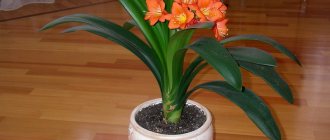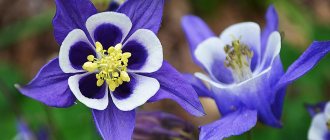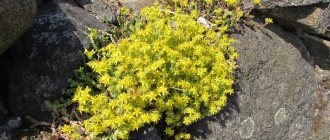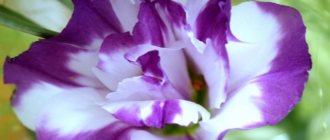How to grow Lisianthus from seeds?
Lisianthus seeds are sown superficially on a sterile substrate, under film or glass. The temperature during seed germination should not exceed 25 degrees. Eustoma shoots appear after 10-12 days; at first they develop slowly.
Interesting materials:
Is it possible to pay sick leave after dismissal? Is it possible to pay the state fee to the court through government services? Is it possible to spray spathiphyllum? Is it possible to format a 64 GB flash drive to fat32? Is it possible to refuse an alternative service? Is it possible to refuse vacation if the order is signed? Is it possible to refuse to participate in a jury trial? Is it possible to disable Google Play services? Is it possible to unsend a message in Gmail? Can you get poisoned by almonds?
Variety of lisianthus varieties
Eustoma can be white, pink, blue, lilac, violet, purple and even white with different edgings.
Non-double varieties and series of “Irish roses”:
- “Kyoto” F1 (“White”, “Picot Blue”, “Picot Wine Red”, “Picot Pink”;
- white, pink and purple and other colors “Twinkie” F1 and “Mermaid” F1;
- "Blue Chip"
- Aurora;
- “Echo” F1 (“Yellow”, “White”, “Pink”, “Champagne”, “Lavender”, “Blue Picoti”);
- "Cinderella" F1.
- "Double White"
Breeders from different countries continue to breed different varieties of this incomparable flower.
Planting and caring for eustoma in northern conditions in Siberia
Of course, it is difficult to grow such a sensitive, tropical flower where there are frequent temperature changes. But if you want to try planting eustoma in flower beds, and not just in a pot at home, then experienced summer residents recommend the following:
- the agricultural technology for growing will be similar, except that you need to apply additional fertilizers more often for immunity;
- planting outside will not take place earlier than June, when all the cold weather has passed;
- to get flowering during the short northern summer, you need to plant seedlings at the beginning of winter or even in autumn;
- the growing technology will be the same as in temperate latitudes, but the seedlings need to be illuminated and fed with complex preparations until spring;
- you need to keep the eustoma in the pot until the warmest days;
- transfer is carried out only in cloudy weather, without injuring the root;
- water the plantings with warm water and mulch;
- In the fall, it is important to have time to dig up the eustoma so that it is not killed by frost.
How and when to grow seedlings
For a plant such as eustoma, growing from seeds at home is quite possible, although it is associated with a number of difficulties (as is all care). That is why you should take into account all the factors necessary for this particular flower.
Timing of sowing seeds
Lisianthus blooms in the summer season. Considering this, as well as the fact that it usually takes about six months from the first shoots to flowers, sowing should begin in January.
When sowing seeds in winter, keep in mind that the sprouts need a lot of light. In the cold season, daylight hours are short, so you will have to organize additional illumination with a special lamp. If we talk about growing a purely indoor crop, then sowing can begin in early March. Then you won't need a lamp.
Where and in what to grow
You can plant eustoma seeds like this:
- In purchased soil. In a floriculture store you need to ask for a mixture for Saintpaulias or violets. You will have to add a little perlite to it.
Soil for Saintpaulias
- In soil made in person. The composition of suitable soil is as follows: peat, garden soil, sand in a ratio of 2-1-0.5.
- In peat tablets. The easiest way to sow seeds is in peat tablets with a diameter of 4 centimeters. First, they are placed in a container disinfected with a weak solution of potassium permanganate. Then add water little by little until the tablets swell. Excess water is carefully drained.
Important ! If soil is selected for dilution, it must be steamed for an hour. Eustomas require sterile soil.
To propagate lisianthus using seeds, a medium-depth container (from 7 centimeters) is suitable. In the case of tablets, the container should be such that they fit entirely into it.
Seed treatment before sowing
Eustome seeds are very small. Therefore, they are most often sold coated, that is, enclosed in a hard shell (it is also a top dressing for the first time), which is destroyed by moisture. You usually don’t need to do anything with it, but such seeds take a long time to germinate. An experienced gardener can help lisianthus germinate faster. To do this, carefully try to crush the shell of the dragee with a toothpick, spread out on the soil and well-moistened.
Germination conditions
In order for the seeds to germinate, it is important to maintain the temperature near planting within +20...+25 °C. You will also need to keep the substrate moist. To do this, you need to regularly spray it with warm water. It is also important to ventilate the greenhouse daily and wipe off any condensation that appears from the shelter.
Under comfortable conditions, seeds will germinate within 10-14 days. When the seedlings appear, you need to gradually accustom them to normal conditions. To do this, remove the cover from the greenhouse first for 30 minutes, then for 1 hour, and so gradually increasing the duration of such sessions.
It is also necessary to provide the plants with 12-14 hours of daylight. Therefore, it is worth installing a phytolamp above the container, hanging it at a distance of 15-20 cm from the seedlings.
To prevent the development of blackleg, it is necessary to spray young flowers with a weak solution of fungicides, for example, Fitosporin or Maxim. Moreover, it is better to repeat this procedure several times at intervals of a week.
Seedlings need to be watered only when the top layer of soil dries. And for irrigation it is worth using filtered, settled water at room temperature. And so that it does not erode the roots of the sprouts, and also does not get on the seedlings, it is better to use a syringe for watering.
Picking
When the seedlings have 2-3 pairs of leaves, and this will happen 45-50 days after sowing, you will need to plant the seedlings in individual containers.
This procedure should be carried out according to the following algorithm:
- For plants it is worth preparing small pots with a diameter of 4-5 cm.
- The containers must be filled with a substrate with the same composition that was used for growing seedlings. But this mixture does not need to be pre-sifted or disinfected.
- The soil must be slightly compacted, and then depressions with dimensions of 3*3 cm must be made in it.
- Using a wooden spoon, you need to carefully dig up the seedlings and transplant them into new soil. It is important that the root collar of the plants is placed flush with the ground.
- The substrate must be well watered, pouring warm water around the edges of the container. It is advisable to add fungicides to the water, such as Fundazol, Vitaros or Maxim (1 g per 1 l).
The containers should be covered with a transparent film and placed in the same place where the seedlings were grown. After 5-6 days, the cover can be removed. But the next day after picking, it is worth spraying the plants with a solution of a growth stimulator, for example, Epin or Zircon.
Caring for pickled seedlings consists of regular but moderate watering and illumination with a phytolamp. As daylight hours increase, you will need to switch the plants to natural light.
7 days after picking, the seedlings need to be fed with a mother solution of calcium nitrate. To prepare it, 1 tbsp. l. substances must be diluted in 1 liter of water. Then 10 ml of the resulting concentrate should be mixed with clean water (500 ml) and used for spraying. The remaining solution must be poured into an opaque container and stored in a dark place.
When the seedlings have 4-5 pairs of leaves, they should be transplanted into larger containers. Pots with a diameter of 9 cm are suitable; a layer of drainage with a thickness of 2 cm must be poured onto their bottom. For this purpose, you should use expanded clay or small pebbles.
This time, the procedure itself should be carried out using the transshipment method, trying not to deepen or expose the root neck of the flowers. After transplanting, the soil should be watered abundantly. In the future, you will need to feed young plants once every 14 days, using mineral fertilizer for seedlings. But it is important to reduce the recommended dose by 2 times.
Before planting in open ground, you will need to harden off the seedlings. To do this, 2 weeks before the event, you need to take it out into the open air, first for 1, then for 2 hours, increasing the duration of such sessions daily.
Pinching
Pinching is the removal of the top growth point. Thanks to this procedure, the lateral buds are activated and the plant becomes bushier. For eustoma, this event should be carried out at the moment when 3-4 pairs of true leaves are formed on the seedlings.
Modern varieties and hybrids
Eustoma variety Deep Blue
Every year more and more seeds of different varieties and hybrids of eustoma appear on sale. Seeds have now become available not only to professionals, but also to amateur gardeners. When buying eustoma seeds, you need to know that it can be tall and short (dwarf). Tall eustoma is grown in gardens, as well as for cutting, while low-growing eustoma is intended for planting in balcony boxes and growing as an indoor crop.
The second thing you need to pay attention to is that the bag of eustoma seeds says “annual” or “biennial”. Of course, choose an annual one, since only professional gardeners with greenhouses can grow biennial eustoma. It is not suitable for an amateur gardener, unless it is short enough to grow in an apartment.
Eustoma variety Champagne
Eustoma flowers can be simple or double. Eustoma with double flowers is, of course, more beautiful than with simple ones. As for the color, you can take any: they are all very beautiful.
Eustoma seeds are small, so they are sold mainly in coated form. This makes them easy to see and easy to sow.
I really like the ABC F1 terry variety series: Misty Pink, Misty Blue, Purple, Blue Rome varieties and the Echo F1 terry variety series: Champagne, Deep Blue, Rose Picoti and others. The eustoma of these series is distinguished by early flowering, strong shoots 80–90 cm high, on which beautiful large double flowers seem to be planted.
Eustoma: cultivation, care, reproduction.
Eustoma, or lisianthus, is a perennial herbaceous plant from the Gentian family, grown in cultivation as an annual. Its homeland is the southern USA. Under natural conditions, eustoma grows along river banks and in lowlands. One species is known in culture - Eustoma grandiflorum. The plant has a height of 30 to 90 cm. The stems are branched, the leaves have a grayish tint. In nature, eustoma flowers are blue or purple. Outwardly they resemble a rose or poppy. For this reason, eustoma is popularly called “Japanese rose”. One plant can have up to 20 large flowers, which do not bloom all at once, but one by one.
Through the efforts of breeders, many varieties of eustoma have been created with a variety of shades of petals: pink, white, yellowish, apricot, greenish. There are varieties with two-colored corollas. Some varieties have weak stems and need support. Researchers from countries such as Japan and the USA are actively involved in breeding new varieties and popularizing eustoma. They developed varieties with double flowers, which bear very little resemblance to the “blue bell” from the prairies. Now eustoma is experiencing a “rebirth”; it is enjoying unprecedented success among flower growers in the USA, Australia, Japan and Europe. Sales of this plant are breaking all records.
Eustoma is good as a potted plant and for cutting. It can also be grown in open ground. Her bouquets decorate wedding ceremonies and holiday tables. The beautiful “rose of love” confidently wins the hearts of flower lovers. In our country it is not so popular yet, but I want to believe that this situation will soon change.
Growing eustoma
Choosing a location. Eustoma loves the sun, so the best place for it would be a window facing south. However, on hot summer days you need to apply shading or take the plant out into the fresh air. If it spends the whole summer in the garden or on the balcony, then with the onset of autumn it must be brought into the house. With good care, eustoma can safely survive the winter. In the spring you will need to divide the bush into two parts.
The soil. Any light and nutritious soil with normal acidity is suitable for the plant. It is very important that the pot has good drainage. And in order for eustoma to feel good, you need to add a lot of fine sand to the soil mixture.
Watering. Despite the fact that in nature eustoma grows in places where the humidity is somewhat high, when grown indoors it is afraid of excessive watering. It should be watered so that the soil has time to dry out between waterings. For this purpose it is better to take warm water.
Feeding. During the growing season, it is necessary to apply complex liquid fertilizer.
Diseases and pests. The flower can be affected by spider mites, as well as thrips and whiteflies. In case of pest attack, it is necessary to treat the plant with insecticides. The plant can get sick with mycosis, gray rot and fusarium.
Reproduction of eustoma
Eustoma is propagated by seeds. Because the seeds are very small, it is best to purchase them in pellet form, as pelletized seeds are much easier to sow. Sowing is best done in mid-March. To do this, you need to prepare sterilized soil and small pots. The seeds are sown on the surface of the soil and, in order not to wash them off when watering, water is poured only into the pan. The crops should be covered with a transparent film and the air temperature should be between 23 and 25 °C during the day and about 18 °C at night. The film must be lifted regularly for ventilation. After 10 - 15 days, shoots appear. They grow very slowly. Small plants should not be left in direct sunlight for a long time, as they may die. When they have 4 - 6 true leaves, they will need to be picked into separate pots. When 10 days have passed since transplantation, you can begin to feed the plants with liquid complex fertilizers that contain microelements. If desired, young plants can be planted in open ground as soon as the threat of spring frosts has passed. As a rule, after a few days they begin to bloom.
Sometimes eustoma is grown directly in open ground. To do this, seeds are sown on the surface of the soil, keeping a distance between plants of 15 - 20 cm. It is interesting that air temperature often affects the “behavior” of eustoma. If young plants, when developing from seeds, were warm from 23 to 25 ° C, then they develop as annuals, that is, they begin to bloom in the first year of life. If the air temperature was significantly higher - 29 - 30 °C, then their flowering period shifts. In the first year of life, they only form a rosette of leaves, and bloom in the second year.
A delicate “rose” will decorate both the house and the garden. It is beautiful as a monoculture, but can also be used to create various compositions. In its native lands, it is considered not only an ornamental, but also a medicinal plant.
Wintering eustoma
Eustoma does not survive the winter in open ground, so it is grown as an annual crop. But you can save the flower until next season.
To do this you will need to follow these instructions:
- In the fall, you should carefully dig up the plant, trying not to damage it with the earthen ball.
- The culture needs to be planted in a pot of a suitable size and brought indoors. It is advisable to place a flowerpot with a flower closer to the western or eastern window.
- While the plant continues to bloom, it should be watered as usual. When the growing season ends, it is necessary to trim the stems, leaving 3 internodes on them.
- The culture must be transferred to a room with a temperature of +10…+15 °C. In the future, it is necessary to gradually reduce watering to 1-2 times a month.
- When the eustoma ends its dormant period and the culture produces new shoots, it needs to be moved to a brighter and warmer room. You also need to gradually increase watering.
An overwintered plant can be planted in open ground in mid-May, when the risk of night frosts has disappeared. In the future, he will need to provide regular watering.
Growing in the garden
In mid-May I plant seedlings in the flowerbed. Eustoma is ready for transplantation when it has formed 4–8 true leaves. This year my seedlings were much smaller than last year's, but nevertheless they bloomed earlier. I noticed that as soon as you plant the eustoma in open ground, it immediately begins to grow. So in a month she will no longer be recognizable.
Transplanting
I try to plant eustoma in the evening. I carefully remove each plant with a lump of earth from the pot and lower it into a well-watered hole, filling the cavities with earth. It is necessary to plant eustoma no deeper than it grew in the pot. After planting, I cover each plant with half a plastic bottle. Such a shelter protects against night frosts and prevents moisture from quickly evaporating, which is simply necessary for young plants in the first three weeks. Then I remove the bottles.
Location, soil type
Eustoma prefers sunny places where it fully reveals its beauty, so I plant it in the sunniest place in the garden. As for the soil, it grows very well on our black soil. I have no information about other soils.
Watering
Eustoma requires moderate watering as the soil dries out. This season I practically didn’t water it. For the first two weeks it was under a bottle cover, where the moisture is retained for a long time, and then it was watered by rains, which at times were too heavy. To protect against diseases, I had to spray the plants with foundationazole a couple of times.
Fertilizers
Feeding eustoma should begin after the seedlings are well rooted, about a month after planting. To do this, you can use high-quality mineral fertilizers for flowering plants, which are completely soluble in water. For example, the Plantafol series of fertilizers. First (in June) I take “Plantafol Growth” with a high nitrogen content, and then (in July, August) I take “Plantafol Budding” with a lower nitrogen content and a higher phosphorus content. Feeding flowering plants with fertilizers promotes more luxuriant and longer flowering. If you don’t find Plantafol, then you can use Kemira or Kemira Lux fertilizer; it dissolves well in water and is suitable for watering at the roots. However, whatever fertilizer you choose, apply it in a lower concentration than indicated on the package.
Bloom
Eustoma variety Purple
Flowering of eustoma begins in mid-July and ends in October. First, the eustoma stem, approximately in the middle, begins to branch strongly, then many buds are formed - 20-35 on one branch, a kind of stem-bouquet with beautiful flowers opening one after another, which you can admire for quite a long time. One eustoma can bloom for two months if you don’t cut it and put it in a vase. And if you cut it, it will begin to grow back from the root and bloom again. Unfortunately, in our area it is not always possible to wait for eustoma to bloom again; it all depends on how warm the autumn will be. But in Crimea there will be no problems with this.
Collecting seeds
Eustoma is easily pollinated and over time, boxes with many small seeds with high germination capacity are formed. It is quite possible to collect seeds if you are growing hybrid eustoma F1. The second generation of eustoma is mostly similar to the parent plants, but some distinctive features may already appear. The third generation will have more severe cleavage. Therefore, I try not to grow third-generation seedlings - I collect seeds only from F1 queen cells.
Diseases and pests
To protect eustoma from diseases during the growing process, it is necessary to periodically carry out preventive spraying with fungicides. If the summer is rainy, spray the eustoma with foundationazol (or ridomil gold). This is a good prevention and treatment for gray rot, powdery mildew and fusarium wilt, which are especially dangerous for eustoma. You can spray 2-3 times with different preparations.
The main pests of eustoma are aphids, greenhouse whiteflies, and slugs. Against them I use the drugs Confidor, Actara, Fitoverm, Actellik.
Planting eustoma in open ground
Eustoma in the garden is not so difficult to care for. But certain conditions must be observed, otherwise the crop will begin to wither and become sick.
It is best to plant eustoma in open ground in early June, when the plant has formed 4-6 pairs of true leaves, that is, about 8-12. During this period of time, the earth is sufficiently warmed up, the probability of frost is almost zero. For landing, the air temperature must be at least 20°C during the day and at least 10°C at night. Moreover, by this period of time the seedlings become quite strong and grow well in open areas. Eustoma blooms 3-4 months after germination.
Lisianthus is planted with transshipment meth. The plant is removed from the container along with a lump of earth and planted in a pre-prepared hole, the depth of which should be exactly the same as in the container for seedlings. The plant is planted at a distance of 20-30 cm from each other.
Selecting a location
The place for planting eustoma should have good lighting. It is here that the Irish rose is able to show itself in all its glory. But it is still better to plant the flower in a place where the rays of the midday sun do not fall on it. Partial shade for this flower is ideal. Lisianthus is not planted under a roof, since drops of rainwater dripping from the roof can injure the too fragile stems and leaves of the plant.
Important!!!
Eustoma does not tolerate drafts. It is better to select closed areas on the western side.
Soil for eustoma
The soil of an adult eustoma, as well as for seedlings, should be loose and moisture-absorbing. So that water does not stagnate in the hole. Must be fertile. Before planting, mineral fertilizer should be added to the soil. Nitrophoska or humus is quite suitable . Eustoma loves neutral soil , the acidity of which ranges from 6.0-7.0 pH. If the soil is more acidic, the flowering of the plant will slow down. With such soil, dolomite flour or wood ash is added to the soil.











